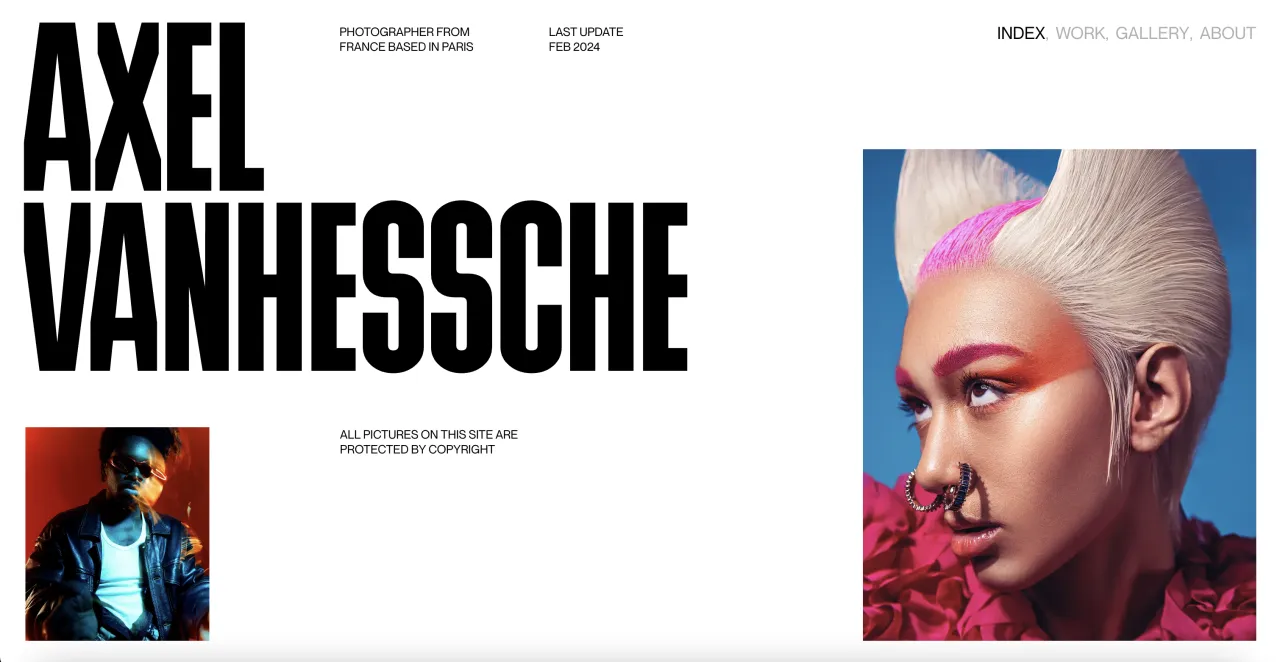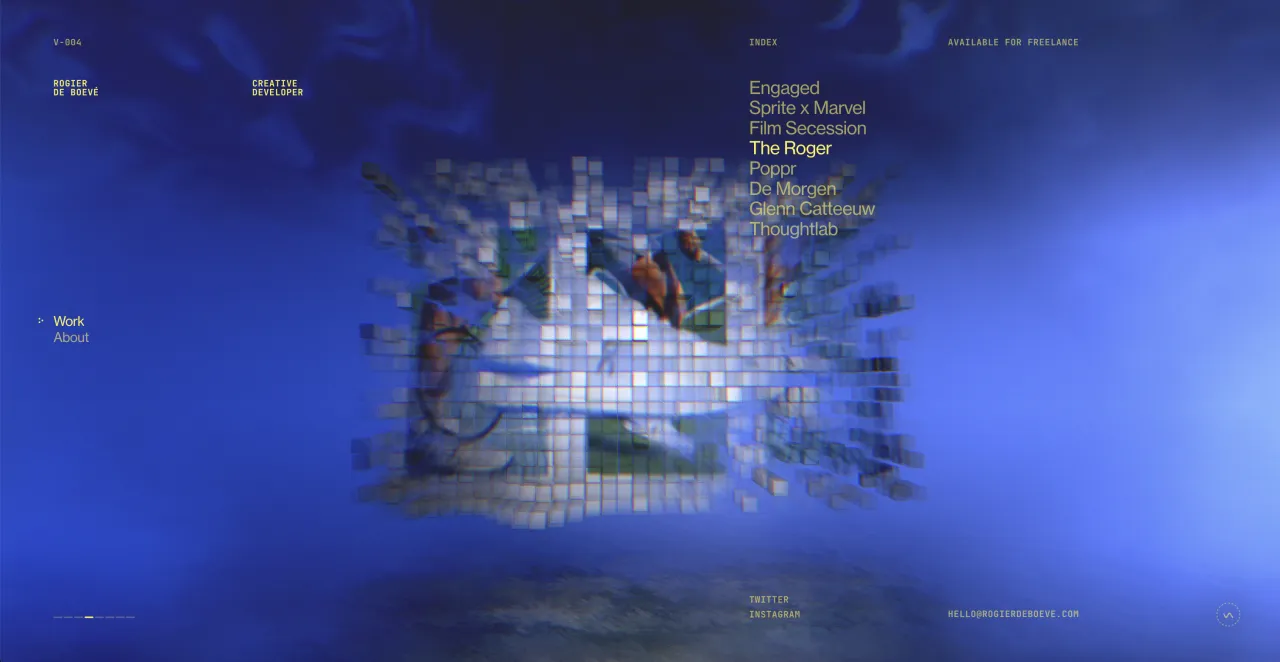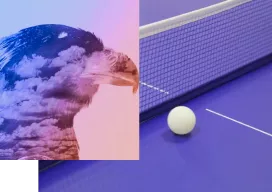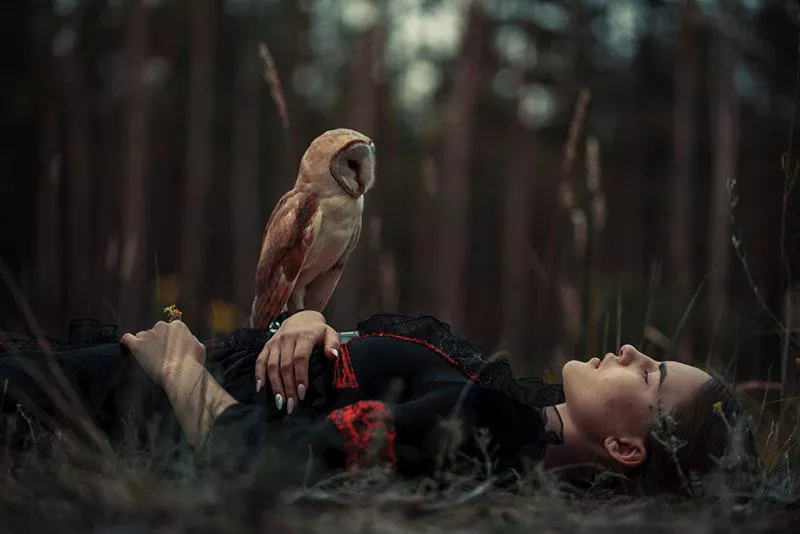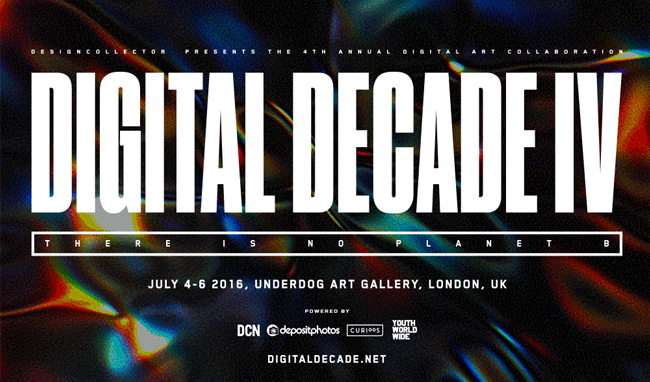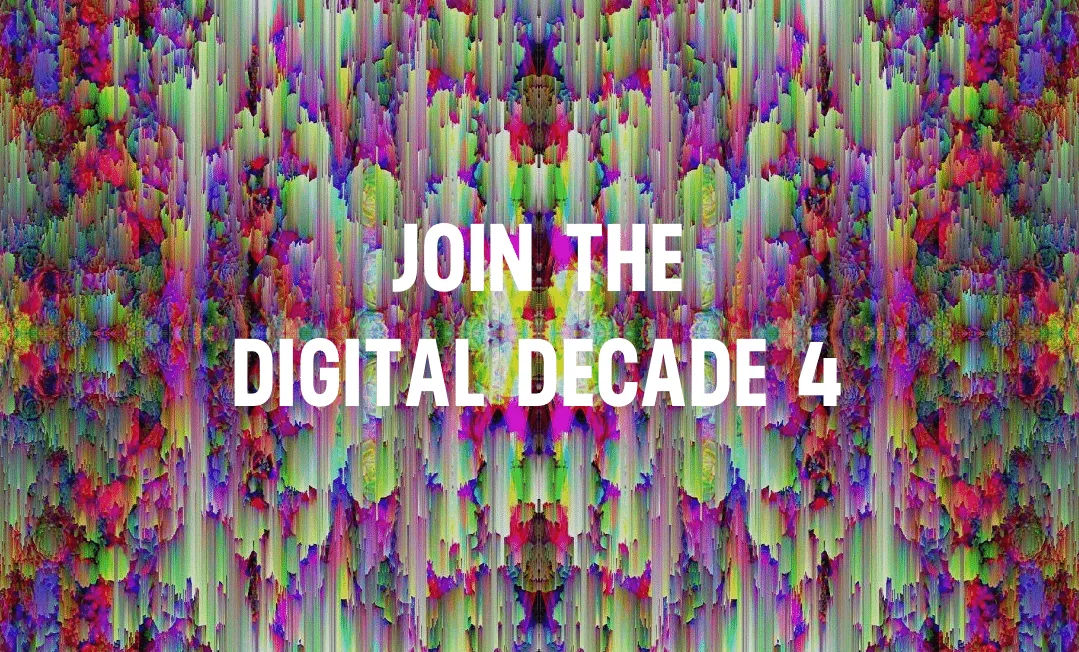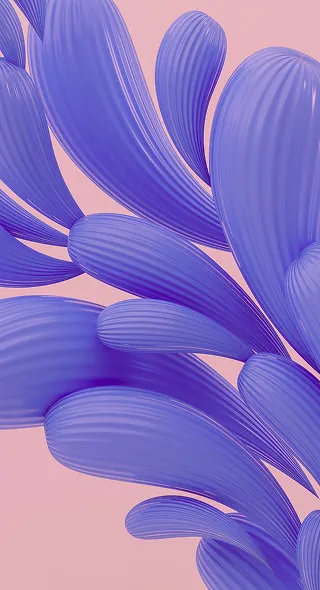3 Things You Would Like to Know about 7 Digital Artists
We asked talented artists three questions about their work, motivation and creative tools.
“There Is No Planet B,” claims this year’s Digital Decade. This contest has brought together 25 digital artists in an effort to imagine the world without war, inequality, diseases and climate change. Artwork will be exhibited at the Underdog Gallery in London on July 4–6.
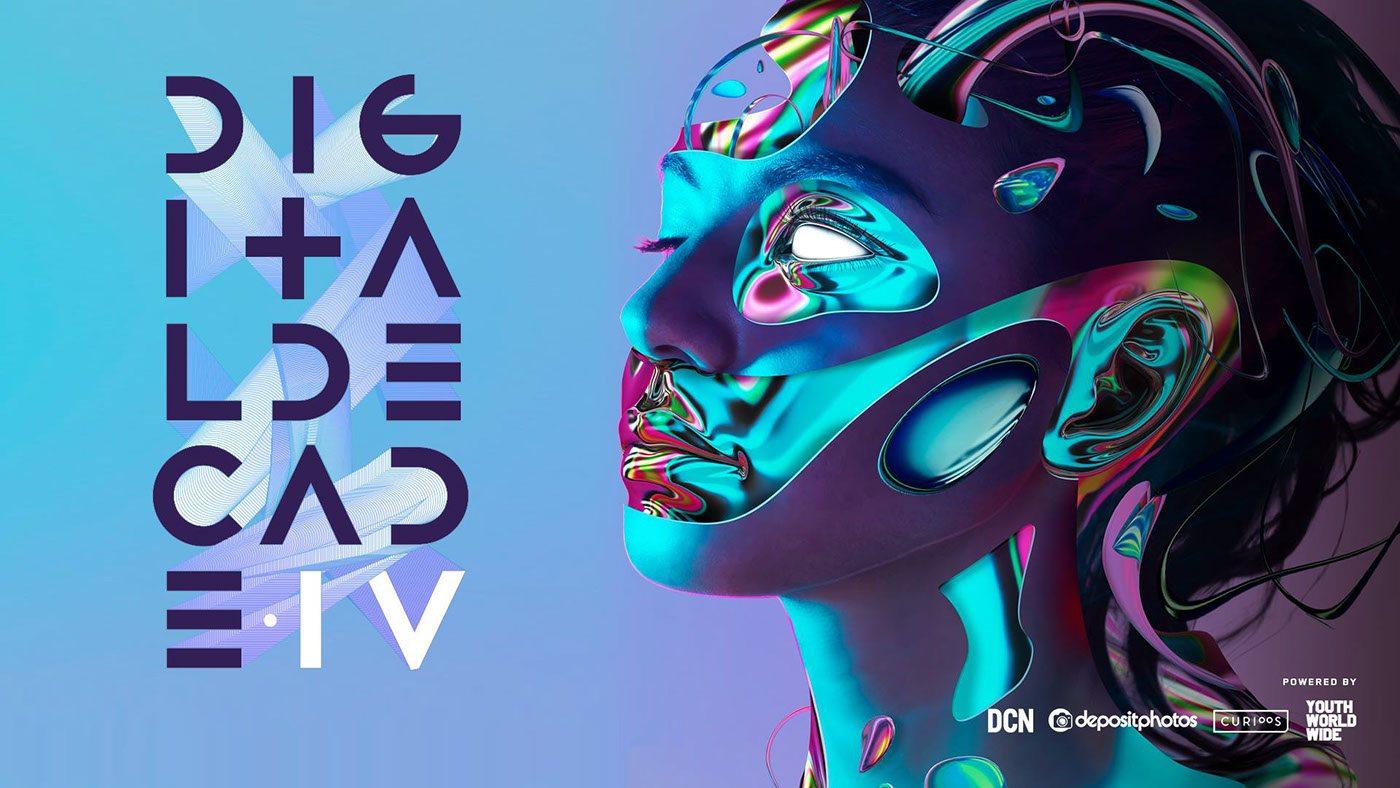
Meanwhile, we talked to the artists and asked them three questions: about the topic they have choosen; about their faith in the power of art; and about the role of stock photography in the creative process.
They have come up with honest, surprising and revealing answers:
Moe Pike Soe

A 23-year-old self-taught digital artist, graphic designer and part-time mobile photographer from Yangon, Myanmar, who specializes in digital art and branding, and works in beauty retouching, advertising, editorial design and product design.
“Some take advantage in the name of religion to cause destruction. If there is no heaven nor hell to fuel our actions, there will be fewer differences between humans. And with no more clashes between faiths, we advance together as a united species.”
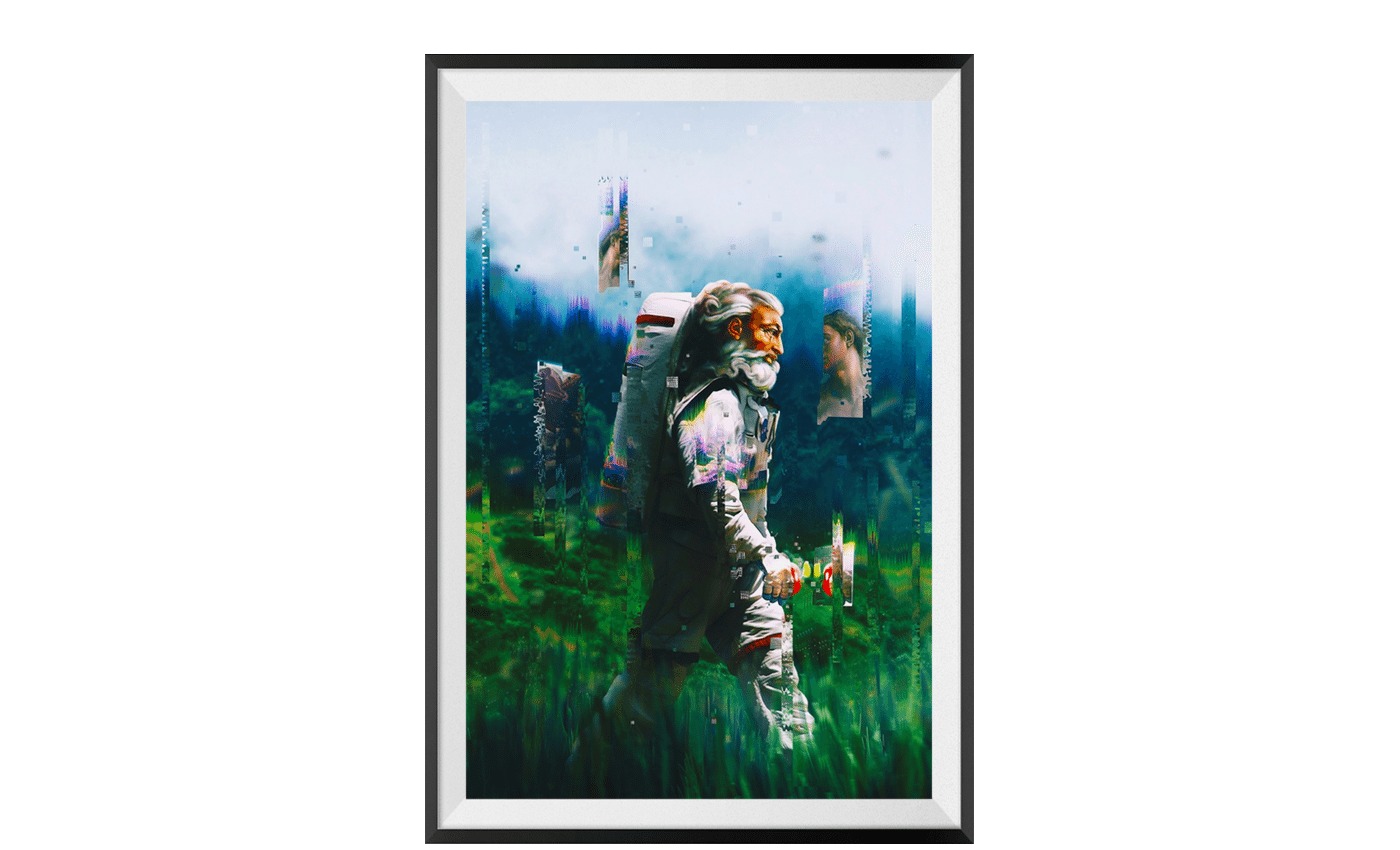
1. You have chosen a religious topic for your work. Do you have any personal interest in this issue?
I normally focus my personal artwork around cosmic and sci-fi themes. Lately I’ve been intrigued by the lore and mythical stories of different religions around the world. But I tried to look at them with a new perspective, such as the creatures and monsters in the stories – they might not come from the heavens. I have plans to explore different myths and approach them with a sci-fi feel in the future. Something like “religious sci-fi.”
2. Do you believe art can help resolve the social crisis?
Any form of art can be a very powerful medium to portray ideas. We’ve seen many propaganda artists throughout the course of history, and they played a big role in persuading people. From music to motion to paintings, art can invoke strong feelings in individuals. It can influence one’s thoughts and emotions.
3. Do you use stock photography in your work? Has it somehow influenced the process of creating digital art?
Stock photography is essential in my daily workflow, and it’s not just for photo manipulation – it also serves well as a reference for digital painting and sculpting, etc. If I’m working on a project, and need photographs of animals and landscapes, I would just search the stock photo libraries, because it’s not possible for me to actually go out and find the creatures. Stock photography makes it easier for me to just download images and start working.
Min Htet Dipar

A 24 self-taught digital artist and professional freelancer from Yangon, Myanmar. Advocates all good things in life and works in a wide range of design fields,including both traditional and digital. “I think of my glitch art on rhinoceros as a vessel to depict the many voices crying in the wilderness. The animals that are being cruelly poached for obscure and feeble reasons ignited my artwork. More of us should be aware of this – and more importantly, we should be aware that there is no Planet B.”
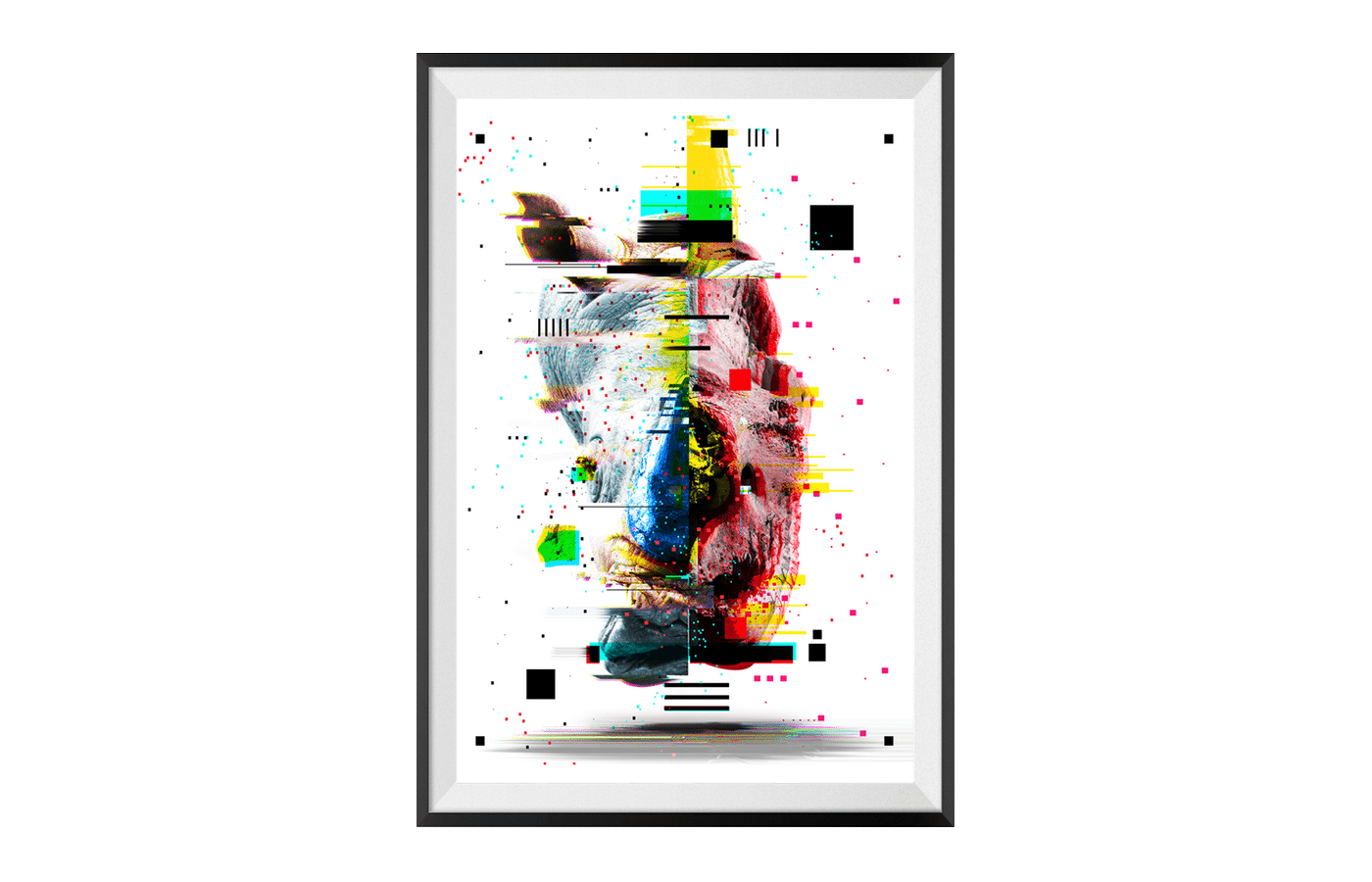
1. You have chosen animal cruelty as the topic for your work. Do you have any personal interest in this problem?
Yes, I am an animal activist myself. Human beings can do great things. We teach our children about the idea of nonviolence and kindness, but to what ends? Do these extend to creatures under a covering of hair, scale, fur, feathers, or wings? Or are these creatures to be of no account?
2. Do you believe art can help resolve the environmental crisis?
I do believe art can resolve the environmental crisis, and more effectively than any other means. Art can reach every corner of the world, and it will carry the voices of the voiceless and the soul of what is scorned as soulless. As you can see, artists from around the world have come together to share one purpose: to raise awareness – to remind ourselves – that our actions are destroying what we call home.
3. Do you use stock photography in your work? Has it somehow influenced the process of creating digital art?
Yes, I used a couple of stock photos from Depositphotos. Artist and designers are resolution freaks – the bigger the better. Hi-res stock photos can be a great deal when doing digital art. It defines the quality of the artwork.
Eugene Soloviev

A creative digital graphic designer and illustrator from Nizhniy Novgorod, Russia, Eugene specializes in photo manipulation and graphic design. One of his latest projects includes creating the cover for a Imagine Dragons album. “The world is made up of extreme, untouched corners of the earth and places that were being destroyed by the industrial age. Nature has the power to heal, enliven, and revive the destroyed parts.”
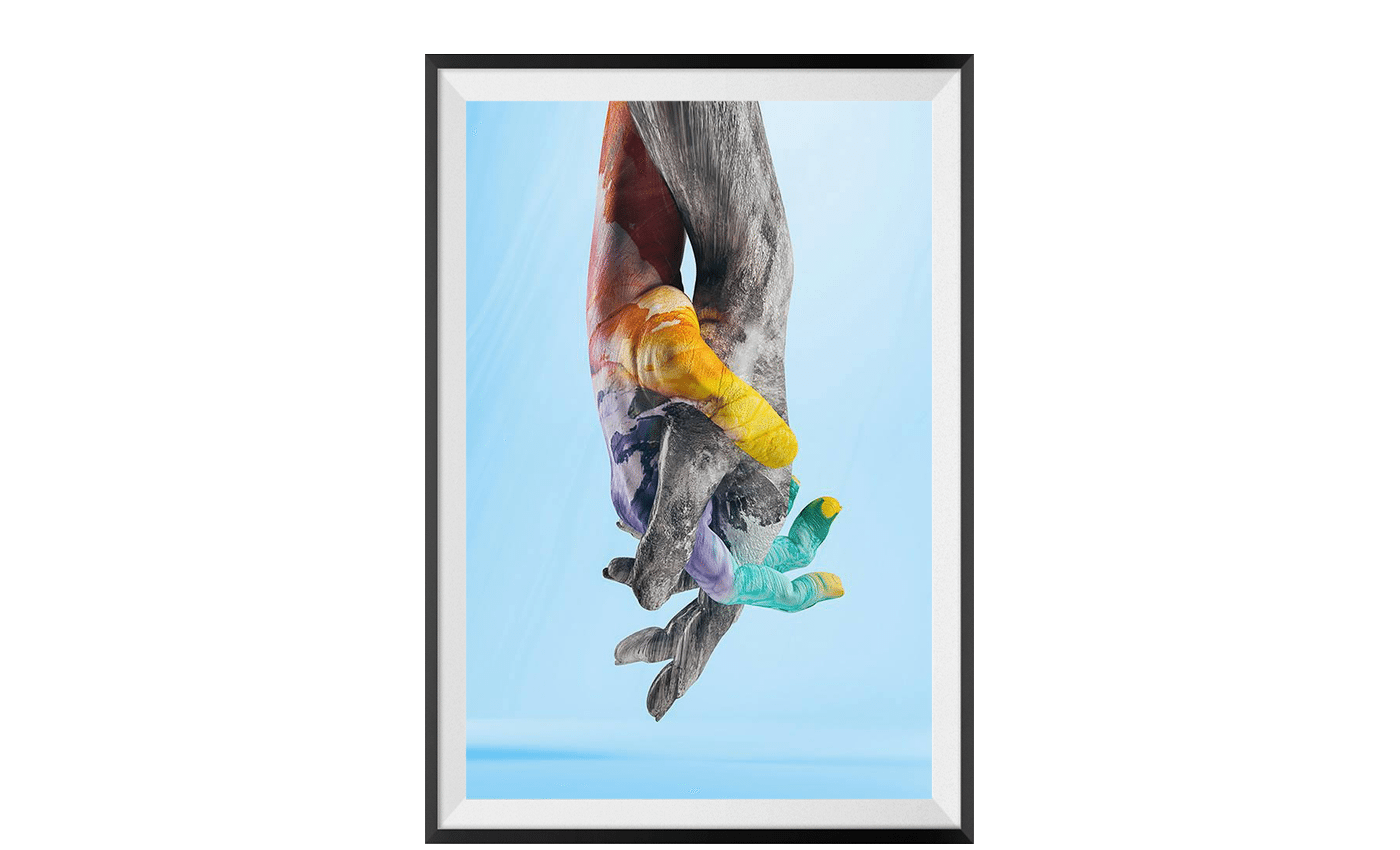
1. You have chosen natural calamities as the topic for your work. Do you have any personal interest in this issue?
This is one of the most important topics for me. Millions of people suffer from natural disasters; thousands of homes vanish. This problem requires time and effort to minimize the harm from pollution and catastrophes. Industrial society is guilty of ignoring these problems. Nobody is safe now.
2. Do you believe art can help resolve the environmental crisis?
No, I don’t. We still live in an industrial society, and it is evolving with the demands of the population. The tension will only increase in the future.
3. Do you use stock photography in your work? Has it somehow influenced the process of creating digital art?
Yes, I sometimes use stock images, when I can’t take a photo myself for some reason. For this project, I have used hand textures from Depositphotos that harmonize perfectly with each other.
Mart Biemans

A multidisciplinary digital artist, illustrator and designer from the Netherlands, Mart prefers to work on large projects in the fields of illustration, graphic design, art direction and typography. “One of the most devastating pandemics was the black death, which killed over 75 million people in 1350 AD. What if there were no pandemics? Would we be as strong as we are now? From death comes life, and we have shown as a species that we can overcome diseases and return even stronger.”
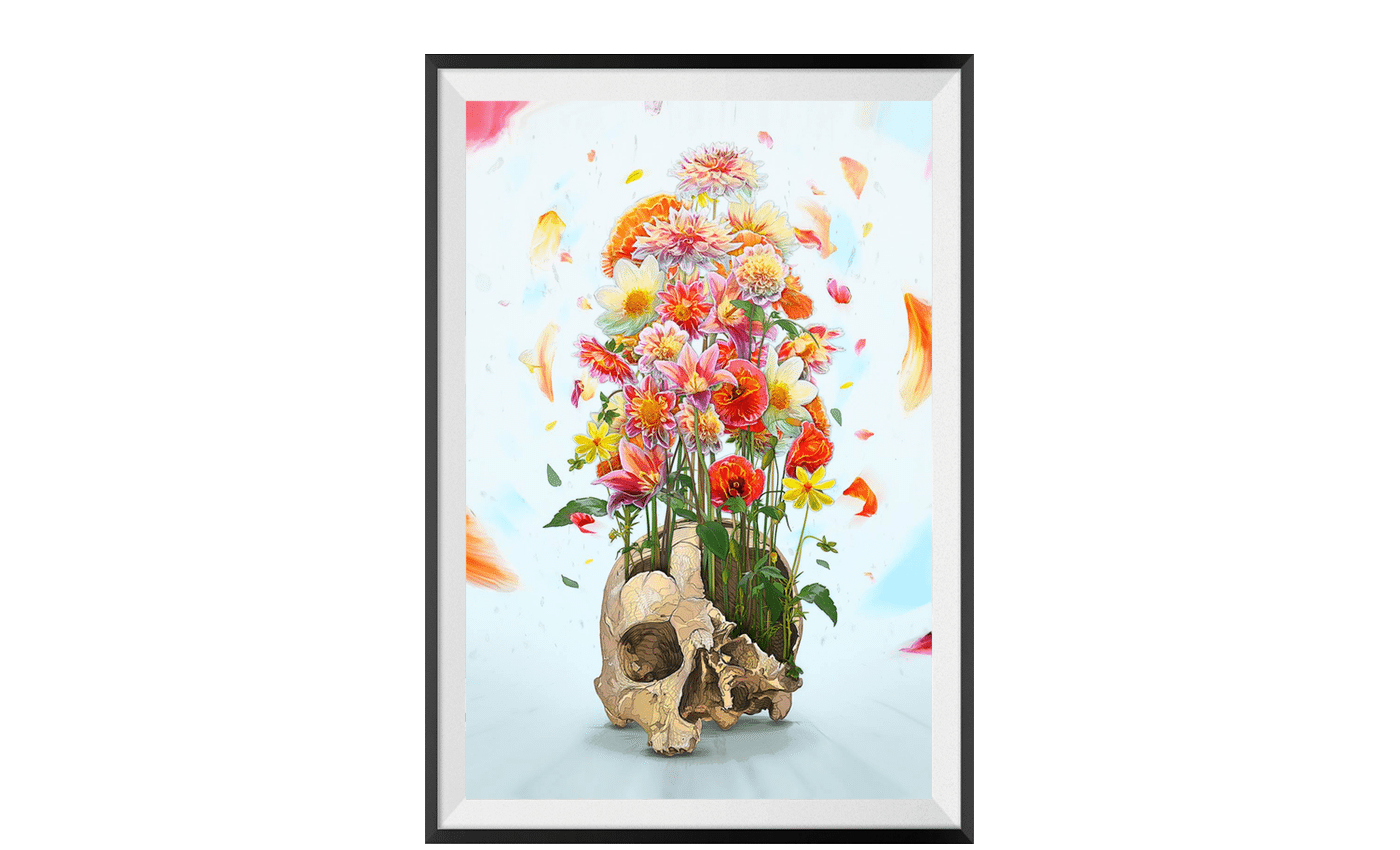
1. You have chosen pandemics as the topic for your work. Do you have any personal interest in this issue or historical events?
I don’t have a particular personal interest in this topic, but I do find it very intriguing, as past pandemics have killed millions of people, and these days there is a still a worldwide struggle with HIV and AIDS. In the past I have done fundraising work, and I’ve also collected money for the Dutch AIDS foundation, which has taught me a lot about the subject.
2. Do you believe art can help resolve the social crisis?
In a way, yes. It won’t directly resolve any issues, but it can help to raise awareness around the world. Aside from that, there have been many occasions where art has been sold for charity so that the money could be donated.
3. Do you use stock photography in your work? Has it somehow influenced the process of creating digital art?
I did. I used stock photography of flowers as a reference to create my illustration. The actual photos aren’t a part of my final artwork but they served as inspiration and for reference. I needed them in order to understand the way some flowers grow and how certain colors will interact. I knew that the exhibition would probably contain a lot of dark work, so I wanted to try and give my artwork a rather light and positive twist.
Louise Mertens

An artist from Antwerp, who also runs a studio focusing on visual arts and design, Louise is inspired by the human face and body, the mysterious, and the incomprehensible. “I imagined that if there weren’t gender issues, we would all be universal. I imagined how this creature would look and how male and female would emerge. My creature radiates calm, serenity and strength.”
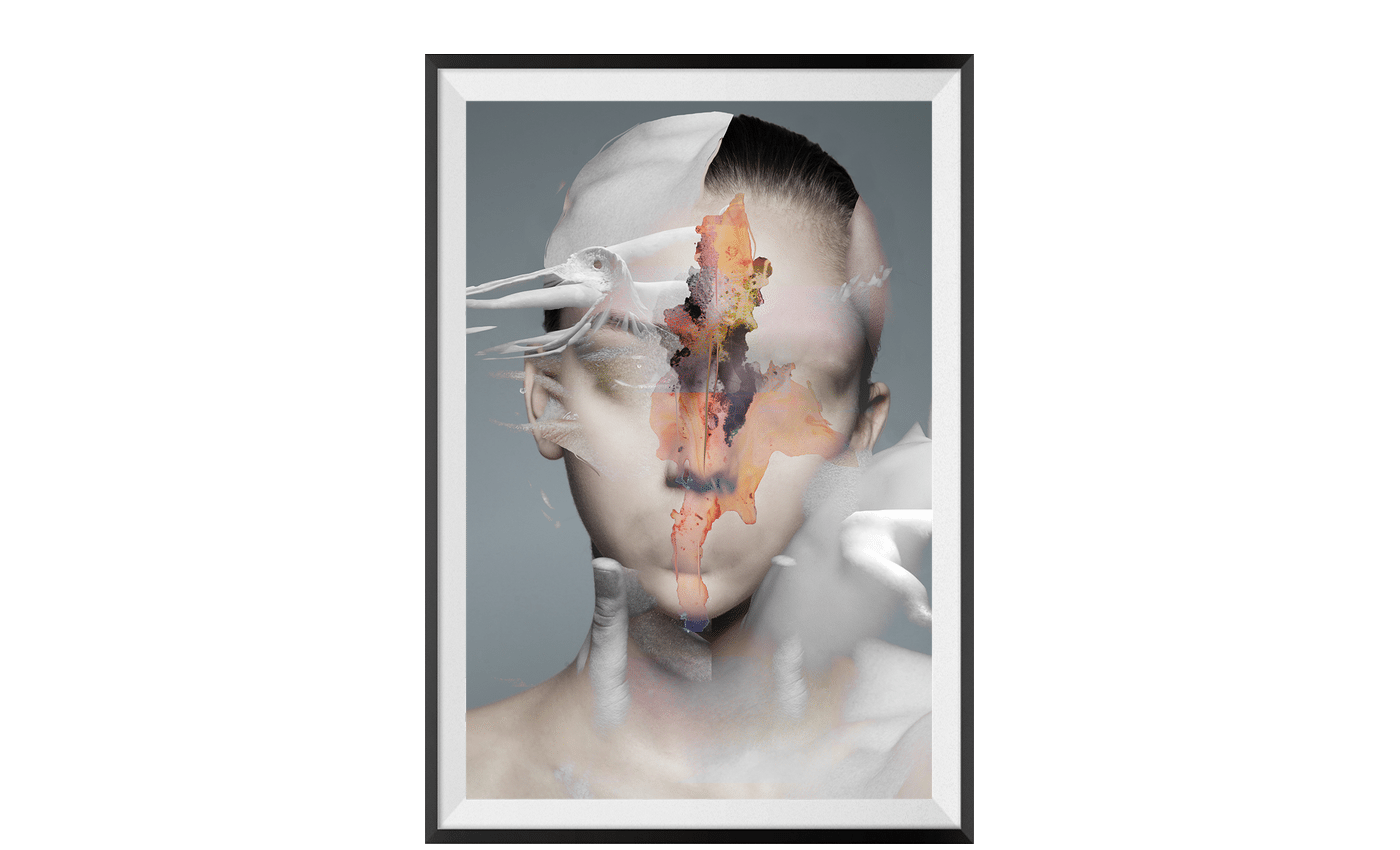
1. You have chosen gender Issues as the topic for your work. Do you face this problem in your professional life?
No. I’ve chosen this subject because it was very much related to my personal work. I love to work with skin textures, bodies and faces. I’ve always been inspired by both the female and the male body. How would a human being look if it didn’t have a gender? I loved working on this project, and I’m happy to contribute artistically to a sensitive topic like this. I truly support people going through this difficult phase, and I admire them for trusting themselves.
2. Do you believe art can help resolve the gender inequality crisis?
I’m not sure if it could help resolve the issue, but I do believe that art is a beautiful way to express emotions, difficult things, and struggle. As an artist, you open yourself to an enormous audience, and I believe that people respond by opening themselves.
3. Do you use stock photography in your work? Has it somehow influenced the process of creating digital art?
For this project I did. I work with many different photographers, carefully selecting and art directing the images so I have total control of the end result. Sometimes, the deadlines are too short or the budgets are too low for a whole production like this; that’s when I decide to work with stock photos. Unfortunately, it’s very hard to find beautiful stock images, or at least how I like them. When I do find them, the manipulation process I do is harsher, and I change almost everything about them. It’s a challenge, but it’s what I love to do.
Daria Po

A graphic designer and art director from Saint Petersburg, Russia, Daria lives and works in Florence, Italy. After working in design studios in Russia and Italy, she became a freelancer collaborating with studios and solo creatives, and now works with clients all over the world.
“Imagine there is no heaven or hell. The poster I created for the Digital Decade IV reflects the ideas of being free from the threat of hell, and of the great variety of potential dimensions that we can’t even imagine; and is based on breaking the rules and proportions of the space that we call reality.”
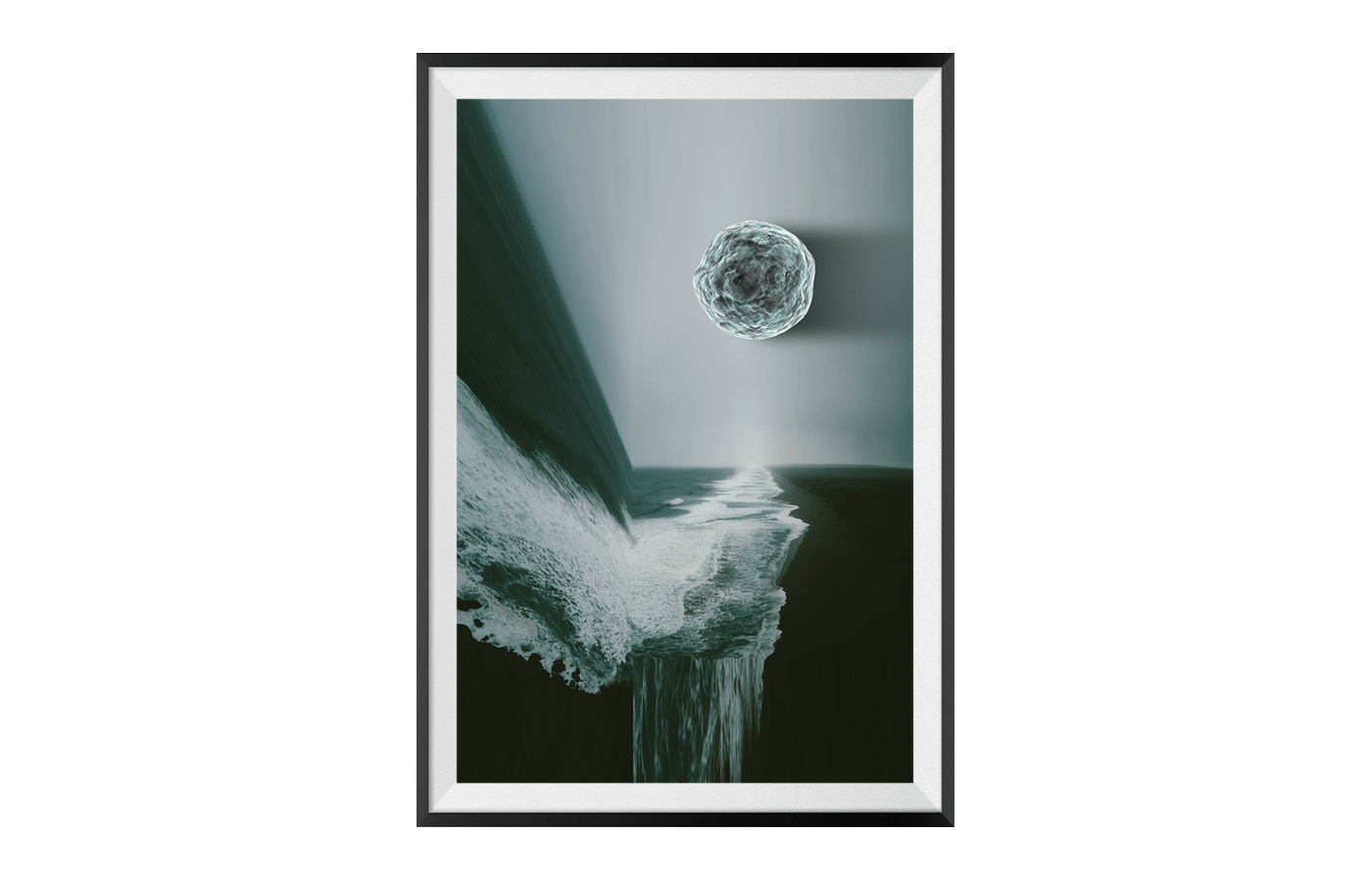
1. You have chosen heaven and hell as the topic for your work. Do you have any personal interest in religious issues?
I don’t have any reasons to believe in heaven or hell, but I’ve been always curious to know what reasons other people, who do believe, have for their beliefs. Why do they consciously choose to believe in something that cannot be proven to exist? And why do they care so much about an afterlife, thereby making life “on this side”’ less meaningful than life “on the other side.”
2. Do you believe art can help resolve the social crisis?
Art itself is one of the basic necessities of life: it can provoke “magical” responses in the human mind; it can change the way we think, and push us to action. Artists always reflect the time and social issues, and their artworks tell people stories, provoke them, and somehow unite them, such as “Migrant mother” by Dorothea Lange or “Untitled” (Perfect lovers) by Felix Gonzalez-Torres.
3. Do you use stock photography in your work? Has it somehow influenced the process of creating digital art?
I use stock photography in my work, and I love to have this opportunity. Having such a broad choice of photos gives me more freedom of expression – it expands my horizons and saves me a lot of time.
Giacomo Carmagnola

A 24 years old university student in graphic and communication in Venice, Italy. He started doing his artworks two years ago using a technique called “pixels sorting” created by Kim Asendorf. “AKILLER’s Death” is a work that was inspired by the warrior par excellence, as one can see from the name: Achilles. In a way, it’s a little ‘”provocative” – I revisited the statue of the dying Achilles, making him drown in the blood that spilled during his battles. I’ve recreated a “sea” in which the warrior is sinking; a symbol of the end of violence in war.”
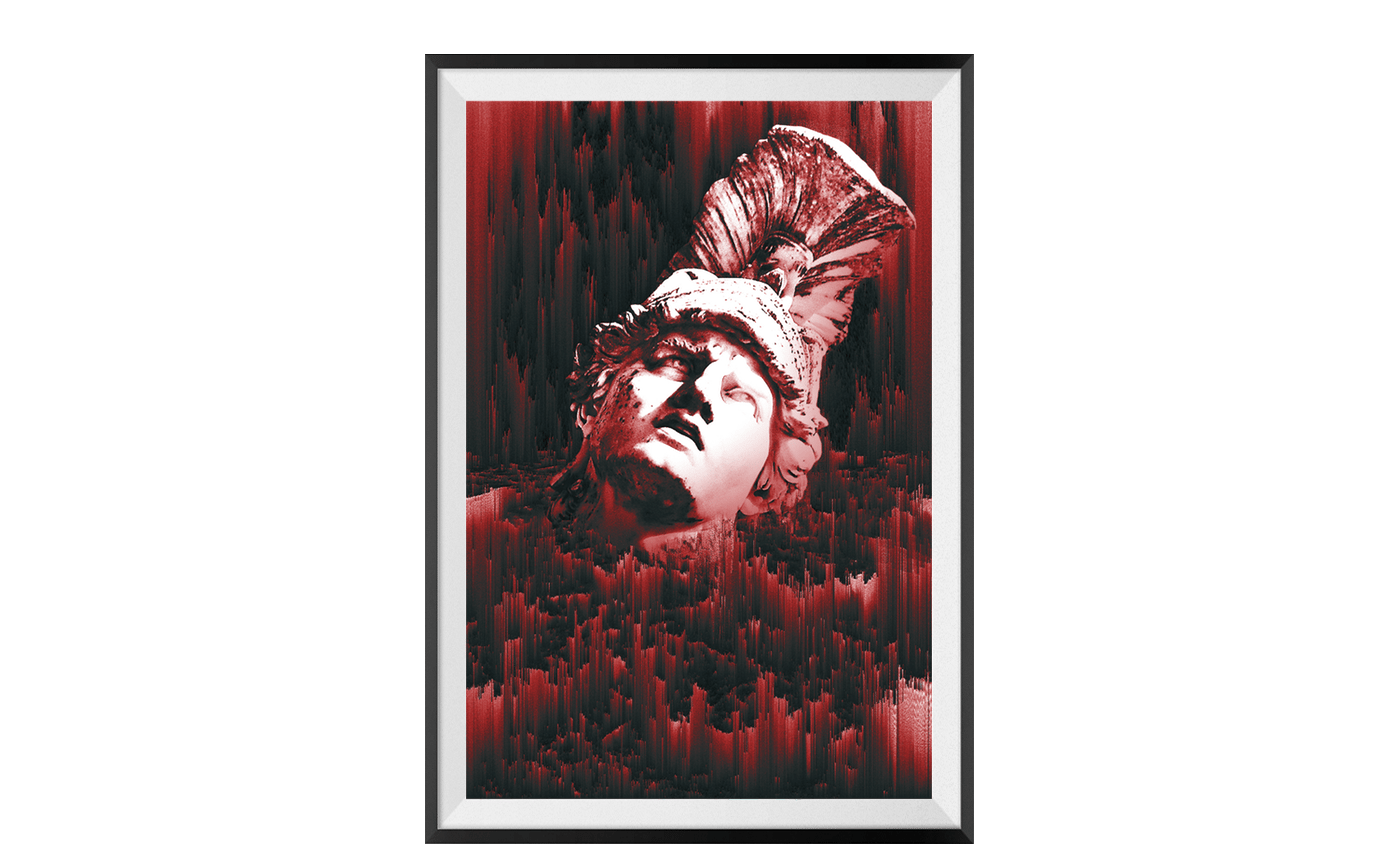
1. You have chosen war as the topic for your work. Do you have any personal interest in this issue?
Every day I watch war conflicts on TV. I’m a lucky person, because I live in a place where there isn’t any type of war. But at the same time, it’s a topic that affects all of us.
2. Do you believe art can help resolve the political crisis?
I think that art could let politicians think about what they are doing. At the same time, unfortunately, stopping war is not the solution. But if art can, even for a second, encourage a politician think about the situation, then I would already have achieved my goal.
3. Do you use stock photography in your work? Has it somehow influenced the process of creating digital art?
The first time I used stock photography was one year ago for Digital Decade. I’m not used to doing so, but every time I used it, it turned out fine. It’s easier to find the original subjects I like. And it’s also in a great resolution.
